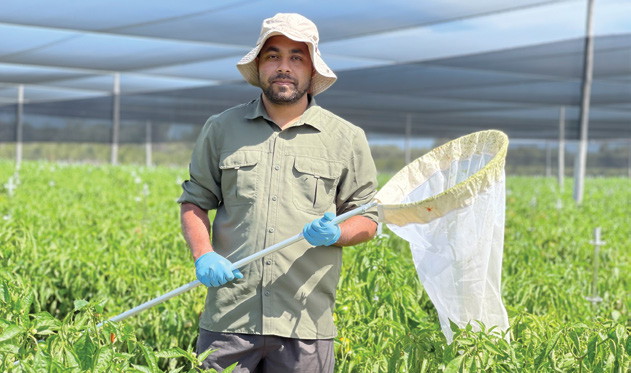Project title:
Project title: Field Survey of Predators of TPP in WA


This project aims to identify which predators are actively consuming TPP in the field in Western Australia. This will support plans for developing biological control options as well as indicating which species are important to conserve in the field. Research is progressing well.
Field sampling
In the first season (prior to the start of the APC project) sampling was done in solanaceous crops at four locations north of Perth (Wanneroo-Bullsbrook). This season, the APC funding allowed the sampling to be repeated in that area and extended to Perth Hills, Myalup and Jindong-Marybrook. Growers reported no TPP in Manjimup or Pemberton in previous seasons, so these areas were not sampled.
A broad spectrum of recognised predator species was found: Araneae (spiders), Asilidae (robber flies, hover flies), Coleoptera (beetles), Hemiptera (true bugs) and Neuroptera (lacewings). Lacewings were by far the most abundant species and their numbers appeared to respond to the presence of TPP. Therefore, a master’s student (Natasha Zhao) has commenced research on the capacity of green lacewing (Mallada signatus) to control TPP.
Testing for TPP consumption in field samples
The predators collected in the field have been preserved. Gut contents will be analysed with species-specific PCR primers to identify those predator species that have been consuming TPP. The PCR primers initially obtained proved to not to be sufficiently specific for TPP. Two new sets have been designed and tested. One pair has shown good specificity for TPP amongst other psyllids species and amongst common prey species in the WA environment. Experiments are now underway to test the efficacy of the PCR test to distinguish between glasshouse-reared predators that have been fed TPP and those not fed TPP.
Future work
A second season of sampling is planned for the coming summer (2022–23). The intention is to sample the range of locations sampled in 2022. However, early and late season samples will be taken at least one location to check for any seasonal variation.
Molecular gut content analysis on the field samples is to be completed.
The APC project compliments two student projects underway at Murdoch. The first is a PhD project studying the potential of two ladybird beetles to suppress TPP populations (Mr Shovon Chandra Sarkar) and the second is a MSc project to initiate similar research for green lacewing (Ms Natasha Zhao).
